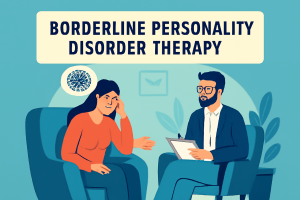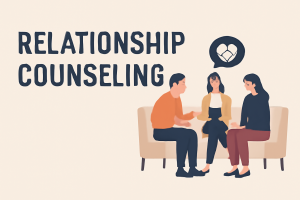Person-centered therapy represents a revolutionary approach to mental health treatment that places the individual at the heart of their healing process. This therapeutic modality operates on the principle that people are the experts on their own lives and possess the internal resources necessary for positive change.
The Philosophy Behind Person-Centered Therapy
Person-centered therapy emerged from humanistic psychology, emphasizing human dignity, worth, and potential for growth. This approach contrasts sharply with traditional models that position the therapist as the expert who diagnoses and treats psychological problems. Instead, person-centered therapy views the therapist as a facilitator who creates optimal conditions for the client’s natural healing abilities to emerge.
The fundamental assumption underlying this approach suggests that all individuals have an innate tendency toward growth and self-actualization. Mental health challenges often arise when this natural tendency becomes blocked or misdirected by external circumstances, relationships, or internal conflicts.
Core Principles of Compassionate Practice
Compassion forms the cornerstone of person-centered therapy, manifesting through three essential therapeutic attitudes. First, unconditional positive regard means accepting clients completely without conditions or judgments. This acceptance acknowledges the person’s inherent worth regardless of their behaviors, thoughts, or circumstances.
Empathic understanding requires therapists to perceive the world through their clients’ eyes, feeling with them rather than simply feeling for them. This deep understanding goes beyond intellectual comprehension to include emotional resonance with the client’s experience.
Congruence, or genuineness, involves therapists being authentic and transparent in their interactions. Rather than hiding behind professional facades, therapists bring their real selves to the therapeutic relationship while maintaining appropriate boundaries.
The Therapeutic Relationship as Healing Agent
In person-centered therapy, the relationship between therapist and client becomes the primary vehicle for change. This relationship differs significantly from traditional medical models where the professional provides treatment to a passive recipient. Instead, both parties engage as whole human beings in a collaborative healing partnership.
The therapist’s consistent demonstration of acceptance, understanding, and authenticity creates a corrective emotional experience for many clients. Individuals who have experienced criticism, rejection, or conditional love throughout their lives encounter perhaps their first taste of unconditional acceptance.
This accepting relationship allows clients to explore aspects of themselves they might typically hide or deny. Shame and fear often keep people trapped in destructive patterns, but the safety of the therapeutic relationship provides space for honest self-examination.
How Compassion Facilitates Change
Compassion in person-centered therapy operates as both a healing agent and a catalyst for self-discovery. When clients experience genuine compassion from their therapist, they often begin extending that same compassion to themselves. This internal shift proves crucial for lasting psychological change.
Many people struggle with harsh self-criticism that undermines their confidence and well-being. The therapist’s compassionate presence models a different way of relating to oneself. Clients gradually internalize this compassionate attitude, developing greater self-acceptance and emotional resilience.
The compassionate therapeutic environment also encourages exploration of difficult emotions and experiences. Clients feel safe enough to examine painful memories, acknowledge personal shortcomings, and confront challenging aspects of their lives because they know they won’t face judgment or rejection.
Practical Applications in Treatment
Person-centered therapy adapts to work with various mental health concerns, from anxiety and depression to relationship issues and identity struggles. The approach proves particularly effective for individuals dealing with self-esteem problems, as the experience of unconditional acceptance directly addresses core feelings of unworthiness.
Therapists practicing this approach focus more on the client’s immediate experience and feelings rather than analyzing past events or implementing specific behavioral changes. They might reflect back what they hear the client saying, helping clarify emotions and thoughts that seem confusing or overwhelming.
The compassion-first approach also emphasizes the client’s strengths and resources rather than focusing primarily on problems or pathology. This perspective helps individuals recognize their own capacity for healing and growth.
Benefits of the Compassionate Approach
Clients often report feeling more self-confident and self-directed after experiencing person-centered therapy. The consistent experience of acceptance and understanding helps them develop stronger internal resources for dealing with life’s challenges.
Many individuals discover aspects of themselves they had forgotten or never fully acknowledged. The safe, accepting environment allows for authentic self-expression that might feel too risky in other relationships.
The skills learned in person-centered therapy often transfer to other relationships. Clients may become more accepting of family members, friends, and colleagues as they learn to extend compassion beyond themselves.
Creating Lasting Change
Person-centered therapy aims to help clients develop the internal conditions that support ongoing growth and well-being. Rather than teaching specific coping strategies, this approach helps individuals reconnect with their own wisdom and healing capacity.
The compassionate foundation established in therapy often continues to influence clients long after treatment ends. They carry the experience of being fully accepted and understood, which can serve as an internal resource during difficult times.
This approach recognizes that healing happens in relationships and that the therapeutic relationship can serve as a template for healthier connections with others. The compassion experienced in therapy becomes a model for all future relationships.







